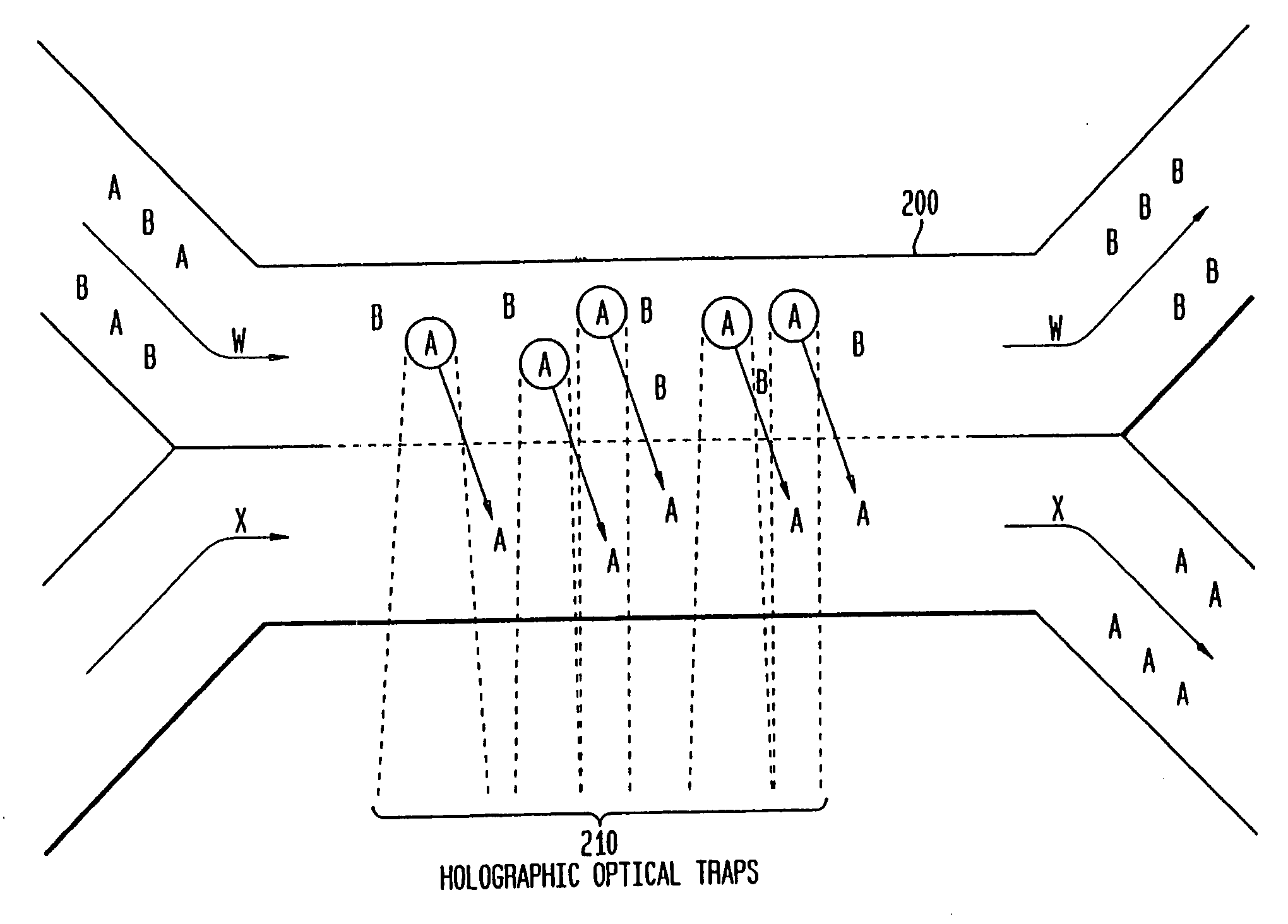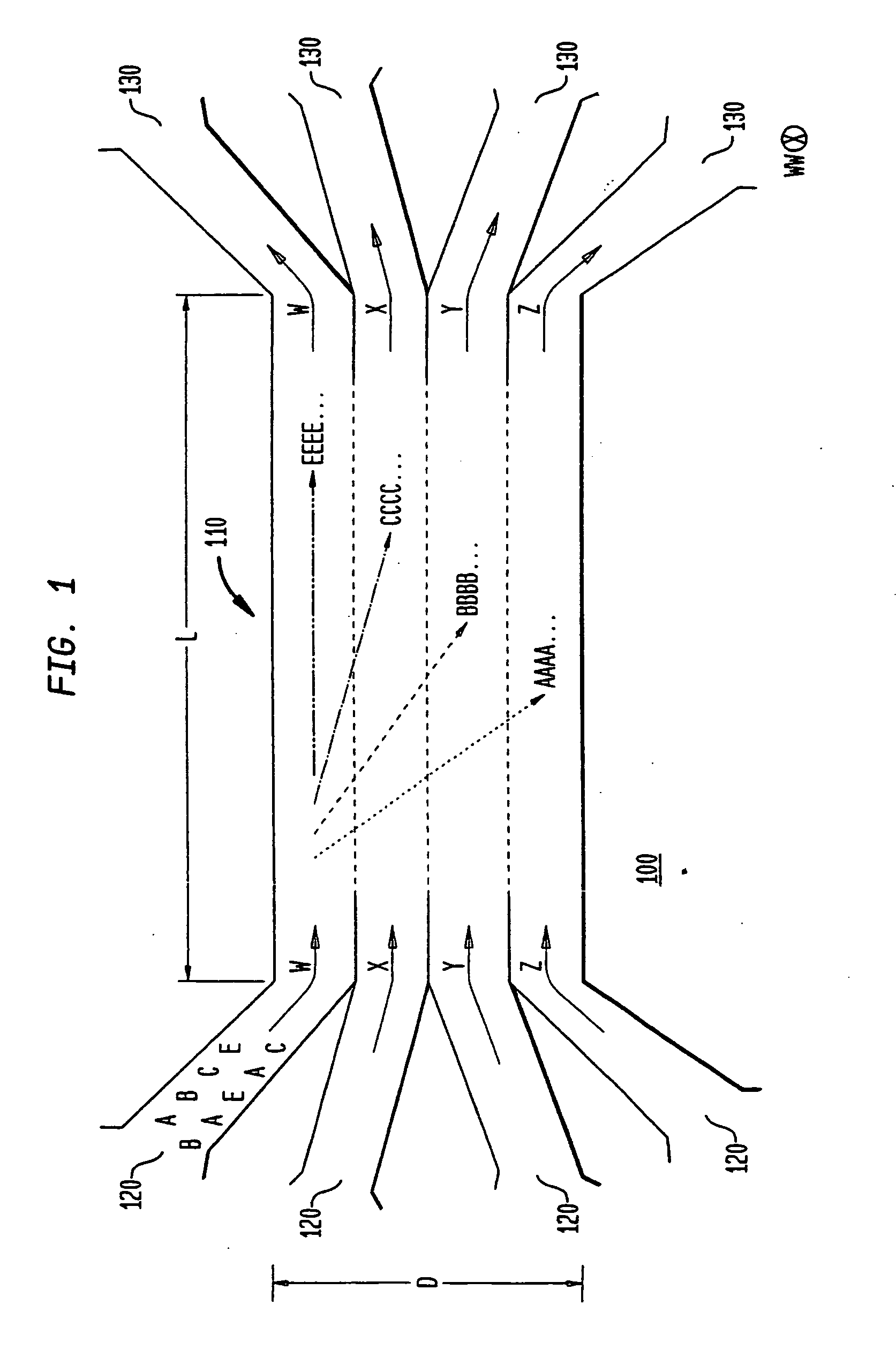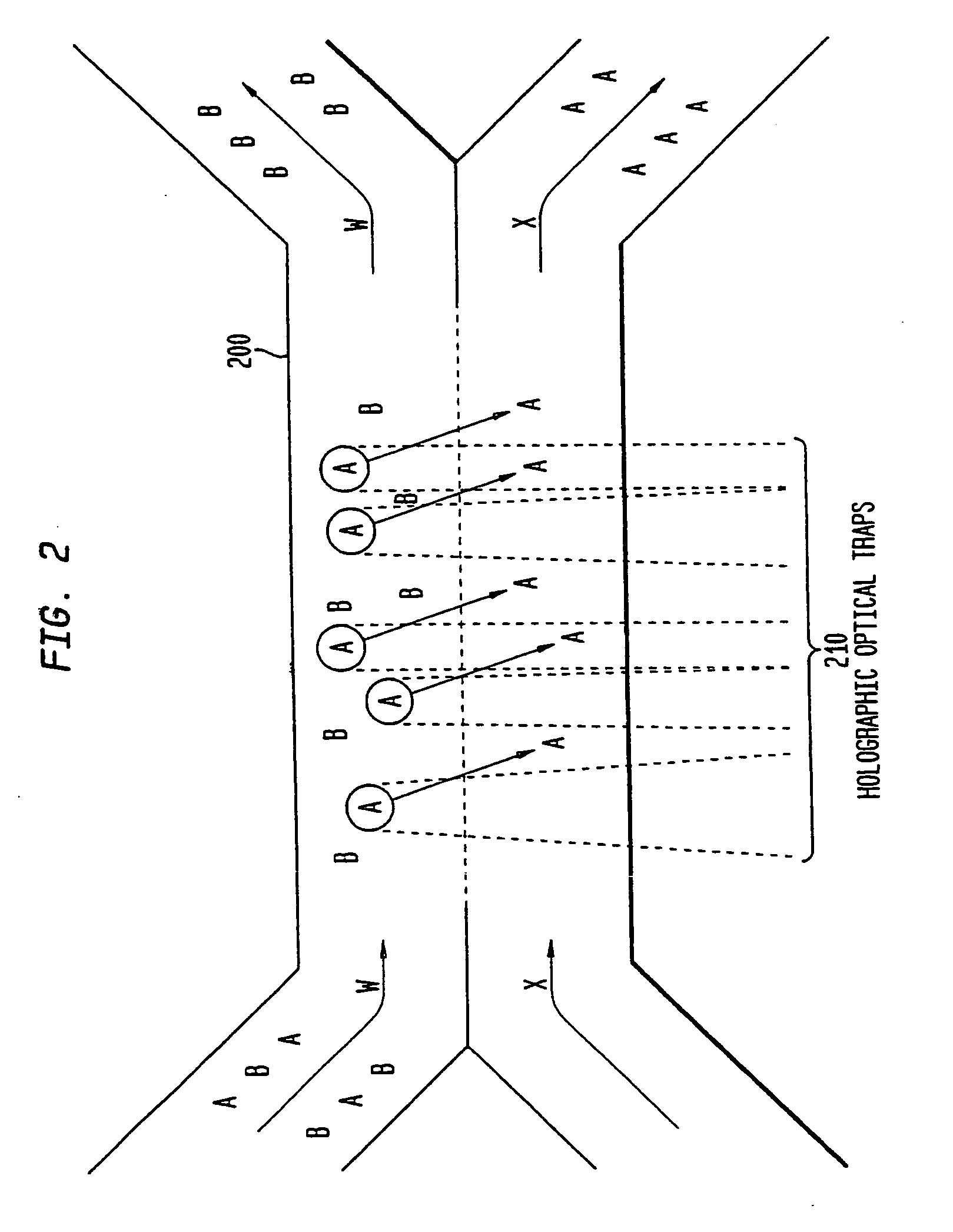Multiple laminar flow-based particle and cellular separation with laser steering
a laser steering and laser flow technology, applied in the direction of nuclear engineering, assay labels, sedimentation settling tanks, etc., can solve the problems of several hours, slow process, and other procedures are time-consuming, and achieve the effect of significant time savings and higher throughput for blood fractionation
- Summary
- Abstract
- Description
- Claims
- Application Information
AI Technical Summary
Benefits of technology
Problems solved by technology
Method used
Image
Examples
Embodiment Construction
[0091]While the present invention is susceptible of embodiment in many different forms, there are shown in the drawings and will be described herein in detail specific embodiments thereof, with the understanding that the present disclosure is to be considered as an exemplification of the principles of the invention and is not intended to limit the invention to the specific embodiments illustrated.
[0092]As indicated above, the various embodiments of the present invention provide for separating components in a mixture, such as separating the various blood components of whole blood into corresponding fractions, such as a platelet fraction, a red blood cell fraction, a white blood cell fraction, and a plasma fraction. The various embodiments, as described below, utilize one or more sorting channels, having a plurality of substantially laminar flows, allowing one or more components to differentially sediment from one flow into another, thereby separating the components into corresponding...
PUM
 Login to View More
Login to View More Abstract
Description
Claims
Application Information
 Login to View More
Login to View More - R&D
- Intellectual Property
- Life Sciences
- Materials
- Tech Scout
- Unparalleled Data Quality
- Higher Quality Content
- 60% Fewer Hallucinations
Browse by: Latest US Patents, China's latest patents, Technical Efficacy Thesaurus, Application Domain, Technology Topic, Popular Technical Reports.
© 2025 PatSnap. All rights reserved.Legal|Privacy policy|Modern Slavery Act Transparency Statement|Sitemap|About US| Contact US: help@patsnap.com



